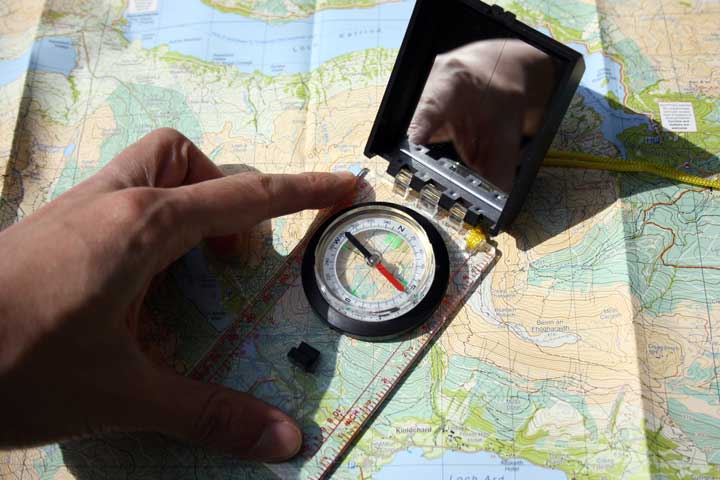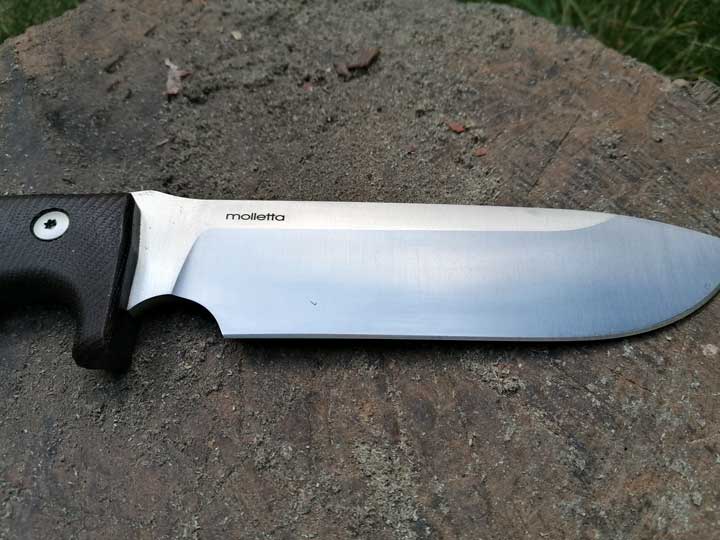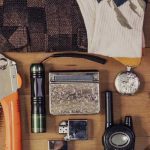Bushcraft is great for mastering the outdoors and being prepared for emergencies. Learning to master the natural environment is perfect for anyone who wants to be ready or wants to get outdoors and learn how to survive on their own.
But what exactly do you do in bushcraft? So many skills, tools, and know-how go into wilderness survival that it’s difficult to know where to start. However, breaking it down to the barebones, bushcraft is quite simple.
Bushcraft is about surviving in the wild with as few tools as possible. Beginners can start with more gear, but the goal is to hone your skills so you can bring as few tools as possible while still surviving in the bush (wilderness, not the woody plant outside your house.)
What Is Bushcraft?
The goal of bushcraft is to survive with as few tools as possible in the wild. That means mastering the art of building shelters, finding food, building fires, and many other skills.
Bushcraft is an umbrella term for multiple skills, like plant identification, navigation, and other survival skills. Anything that can help you survive on your own is considered a part of bushcraft.
Beginners will want to start with the four most important things for survival: shelter, water, food, and fire. Once you start with these four things, you can expand your skill set with whittling, toolmaking, and hunting.
Beginners will also want to take more gear than advanced bushcraft survivalists and spend less time in the bush. Still, as you gain experience, you can challenge yourself with more difficult survival situations, like the middle of winter, trying to camp in rugged terrain, or even traveling to a different biome.
Essential Bushcraft Skills
Here are some essential skills for your first bushcraft adventure. These are the basics for every bushcrafter and can be useful skills for everyone to learn in an emergency.
Building Shelters
Building a shelter from scratch isn’t tricky. You have to find the right spot and suitable materials. After that, it’s just a matter of constructing a simple lean-to to keep warm. For example, a common type is a tipi. You just lash three long, straight pieces of wood and bind them together to form a tripod. Then you lean more sticks and weave leaves in.
A tarp is an excellent tool for building shelters as a waterproof base or roof. Ponchos and other waterproof fabrics are also perfect and suitable for beginners.
Another essential part of building shelters is finding an appropriate place. It should be on level ground, at least 200 ft from your water source. Don’t build in ravines or other areas that might get flooded with a bit of rain. And finally, don’t build under trees. The risk of lightning strikes and falling limbs is too significant.

Foraging and Trapping Food
Foraging sounds simple on the surface, but it’s very involved. The first skill you need to learn is plant identification. Knowing what plants are in your area, what’s safe to eat, and what’s toxic is the first step to safe foraging.
Beginners should bring pocket guides with pictures for identifying plants in their area. Take a few hikes to learn more about plants in your area and get used to identifying them before attempting to survive.
The following primary source of food is animals. Hares, mice, birds, and other small creatures are relatively easy to trap. But this also requires several skills to pull off. You need to be able to track your prey, build snares, deadfalls, and other traps, and apply them to different situations and game.
Plus, once you’ve captured your prey, you need to be able to properly clean and cook it before it’s ready to consume. However, it’s a passive way to get more food and is an essential source of protein when you’re far from civilization.
Start by learning what you can catch in your area, then how to clean animal carcasses. After that, it’s just a matter of cooking them to delicious perfection. Then again, hunger is the best seasoning, so anything you make in the bush will taste great.
Navigation
Understanding where to go when out in the boonies and the ability to find your way back to civilization are skills you should know before walking into the middle of the woods.
While you want to learn how to survive on your own, knowing when to help and how to get back are things you should understand before attempting a hardcore camping trip. A compass and map are essential items in a beginner bushcrafter’s knapsack.
However, advanced bushcraft learns how to navigate by the stars, with the sun, and the landscape, guaranteeing they’ll always find their way back. For example, most towns and cities spring up around water sources. So if you follow a river or creek downstream, you’ll hit civilization in no time.

Purifying Water
After shelter, the next most important thing for survival is water. This is more difficult in desert regions and other places that don’t have access to fresh water. You must get creative by creating a solar still or destroying native plant life for the precious moisture inside.
Collecting rain is possible with more permanent structures, but it’s not a reliable way of getting water if you’re only staying for a short while. However, none of this is a problem if you’re in an area with streams, rivers, creeks, and other water sources.
The first rule for gathering water from these places is to pick the right source. Nothing too close to roads or fields where artificial chemicals are used. Next, choose a rockier area where the water is mostly clear to gather water. The rocks help filter large debris from the water.
The next step is to filter your water. You just need a cloth or a bandana to get any large debris out of the water. Then you must purify the water.
The simplest way to purify water is to boil it. Once it’s boiled for around a minute, it’s ready for consumption, cooking, cleaning, or whatever else you want to use. You can also make water purifiers using charcoal and other materials, but they’ll be small unless you can build a more permanent shelter.
Knot-Tying
Tying good knots is essential for adequately building shelters, traps, and other survival tools. The cordage you brought with you or made out in the wild is only helpful if you know how to use it right.
Brush up on essential knots and practice them at home. You don’t want to be frantically trying to lash together a shelter as the thunder rumbles, and dusk falls. Plus, it’s easy to practice at home and has a variety of other uses besides bushcraft.
Fire-Laying and Starting Fires
Fire separates man from beasts and is an essential part of mastering your environment. But perfecting the practice of reliably creating fires is more complicated than it seems. First, you need to clear the area for your fire and ensure nothing nearby could catch on fire.
In arid places like California, it’s too dry to light up a fire at all. But in other areas, fires are magnificent. Then you need to decide how to build your fire. Fire-laying can get very complicated, but the basic tipi should suit most of your fire-creation needs.
Then, you need fuel. Tinder to catch fire, kindling to build the flames, and fuel to feed the fire and keep it going as long as you need. Get all of these before starting your fire.
An essential tool for creating fire is a fire striker. This can be lighters, matches, or, more commonly: a ferrocerium rod. These rods are made of several precious metals that cast hot sparks when running along a metallic edge. They light fires no matter the weather or wind, making them a favorite of bushcrafters.
First-Aid
When you have no one but yourself to rely on, you need to be able to administer emergency medical care. Accidents happen, but when they happen out in the middle of nowhere, you need to stabilize yourself before seeking professional medical assistance.
Take a first aid course, and pack a kit in your backpack. It may save your life if you encounter an aggressive animal, cut yourself with a tool, or burn yourself on the fire.
Essential Bushcraft Tools
The tools of the bushcraft trade are few. After all, the idea is to survive with as few things as possible, and multiple devices would defeat the purpose. Making the most of what you have is the whole point of bushcraft.
However, beginners will naturally have more gear than experienced bushcrafters. Start with a compass, tarp, and other helpful tools and materials before slowly paring it down to the bare essentials.
Knives
Knives are the heart and soul of bushcraft. If you have to take any tool with you into the wild, bring a good knife; if you know how to use it, you’ll have a decent chance of survival.
A good knife will have a comfortable grip, stainless steel or other steel blades, and a full tang. That means the metal part of the knife runs through the entire grip, making it more durable.
You’ll also need something to maintain the knife, like stropping leather and sharpening tools. After all, a dull knife is more dangerous than a sharp one. Proper tool maintenance is necessary when it’s all you must rely on.

Axes
A good ax is worth its weight in gold—or it’s essential for crafting shelters, fires, and other woodwork. You can try to split wood with your knife, but it may break, and the tool has better uses.
But you can use an ax for cutting knives you simply can’t handle, like clearing wood, chopping firewood, and making your way through the undergrowth. Saws are a popular alternative as they take less energy and are less dangerous than axes.
Firestriker
A firestriker helps you create fire. Simple, but don’t underestimate the importance of this tool. Sure, you can fancy building your firestriker out of sticks and other materials, but when you’re cold, and your fingers are going numb, you’ll be thankful you brought this handy tool.
Ferrocerium rods are the most popular among bushcrafters for their versatility, but other options include lighters, matches, and fire strikers.
Pot
So, no one mentions this tool when it comes to bushcraft. Even though it’s essential for boiling water and cooking, you may also want to bring a spoon unless you can craft one yourself.
An excellent lightweight camping pot is helpful when bushcrafting, particularly when you can’t create an easy replacement out in the wild. Therefore it’s one of the essential tools you can bring.
Advanced Bushcraft Skills
So, you’re ready to start your bushcrafting journey. The easiest way to learn is to find a mentor who can teach you the beginnings of the craft. Once you start, here are some more advanced skills you may want to pick up.
Whittling
Whittling isn’t just a great way to kill time while huddled beside a campfire. It’s a great way to make your tools. Just take your knife, apply even pressure with your thumb, and slowly shave away from you.
Bowls, spoons, stakes, and more are good projects for the avid bushcrafter.
Creating Watercraft
Water is everywhere, and if you want to increase your mastery of the elements, you need to learn how to traverse it. You can drift downstream, fish from them, or even travel long distances in a more advanced watercraft. Learning how to build your watercraft does a great project while surviving out in the bush.
Star Navigation and Other Forms of Natural Navigation
A compass and a map are excellent places for beginners to start. But experts understand how to navigate with nothing but their knowledge of the natural world.
Stars, sun, and landscape give clues about your location in the world. Learning to read and navigate these clues means you won’t have to rely on a destructible map or a magnetic strip that doesn’t work everywhere.
Bushcrafters Survive in the Wild
The main thing bushcrafters do is survive in the wilderness with only a few tools and their wits. It takes time and dedication to master, but it’s gratifying. Not only will you be prepared in case of an emergency, but you’ll also feel more confident.
After all, when you’ve survived a fierce storm or found your food out in the wild, the modern world seems more approachable and accessible.



